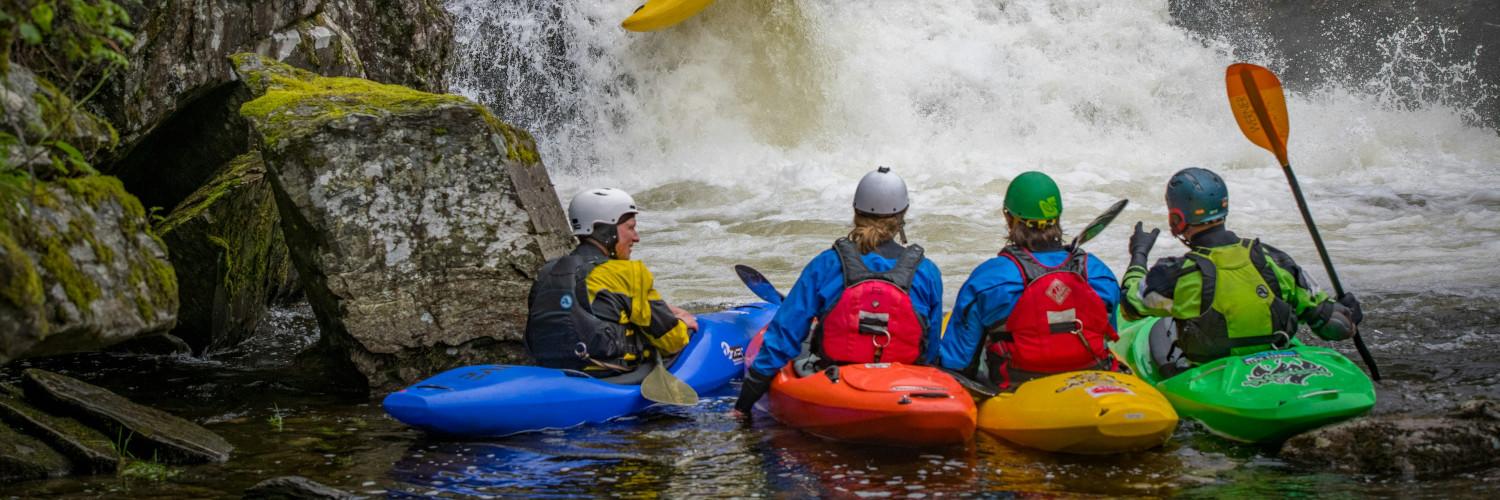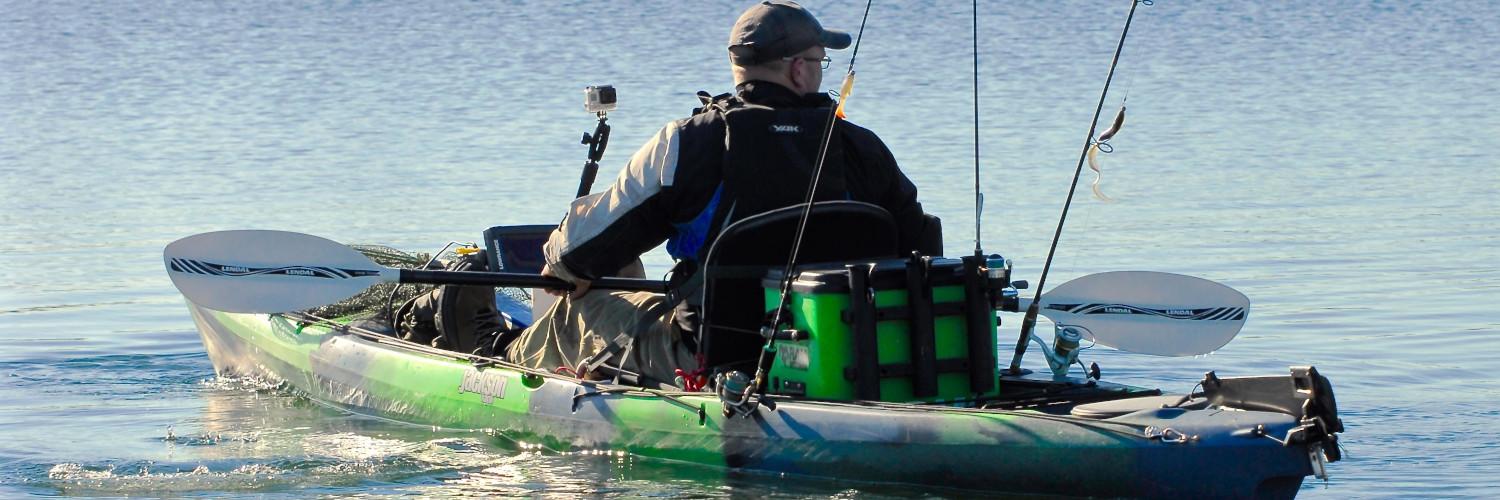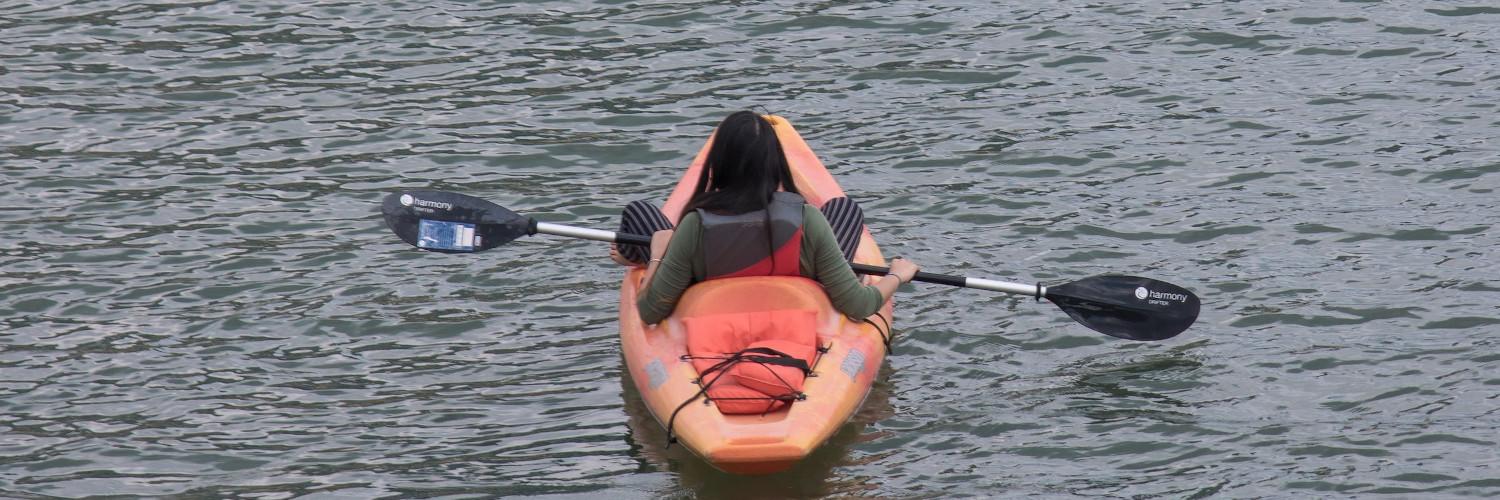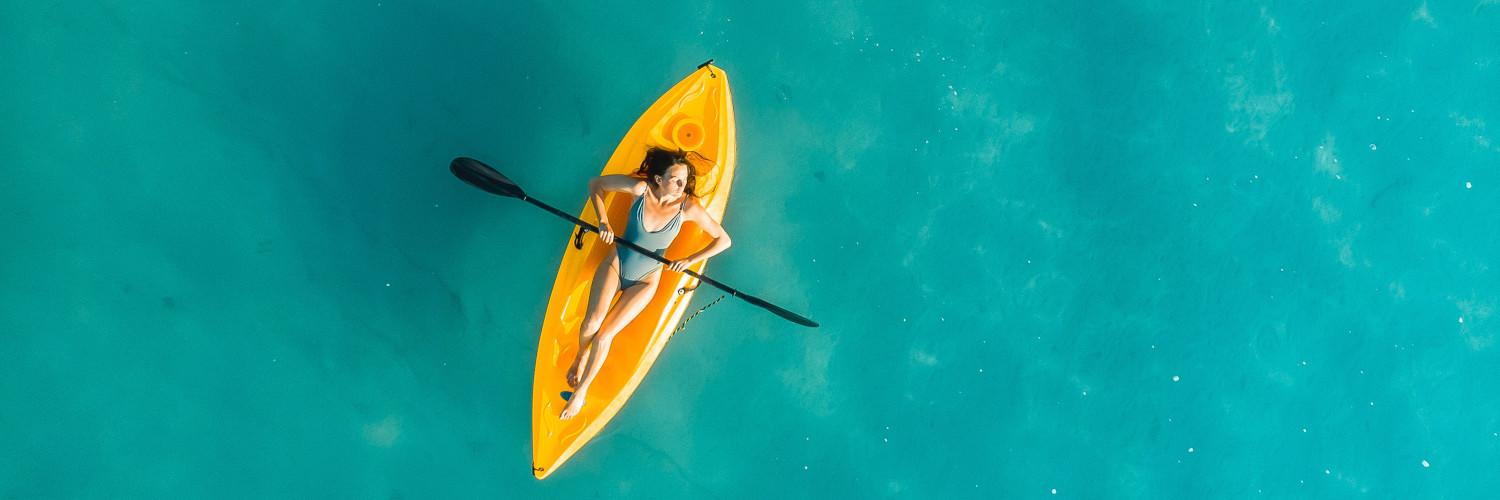Kayak guide certification is a formal process that equips individuals with the necessary skills and knowledge to safely lead paddling activities. The American Canoe Association (ACA) is a recognized authority offering such certifications. Aspiring kayak guides must demonstrate proficiency in a range of paddling techniques and safety protocols before they can be certified. This includes mastery of various strokes, rescue procedures, and the ability to effectively instruct and manage groups on the water.
The certification journey typically begins with an Instructor Development Workshop (IDW), which focuses on developing teaching skills and enhancing paddling techniques. Following this, Instructor Candidates are required to pass an Instructor Certification Exam (ICE), which assesses their capability to teach and lead kayaking courses. It is imperative that candidates maintain a professional demeanor throughout the process, showcasing adequate boat control and strong intermediate paddling skills.
Certifications differ by the environments they cover, from calm water suitable for beginners to challenging whitewater conditions. With safety as a paramount concern, instructors learn to tailor their guidance to the experience and ability of their participants. This comprehensive preparation ensures that kayak guides are well-equipped to foster enjoyable and secure kayaking experiences for all.
Understanding Kayak Guide Certification
Kayak guide certification is essential for ensuring that instructors possess the necessary skills, knowledge, and experience to teach paddling safely and effectively. There are established levels of certification, each with specific requirements, predominantly overseen by the American Canoe Association (ACA).
American Canoe Association’s Role
The American Canoe Association (ACA) plays a pivotal role in standardizing kayak guide certifications. It is a recognized authority in the paddling community, offering an Instructor Certification Exam (ICE) which assesses candidates on a range of competencies. ACA members who seek to become certified instructors must undergo rigorous training and evaluation to meet the ACA’s high standards.
Levels of Certification
The ACA has delineated clear levels of certification for kayak instructors:
- Level 1: Introduction to Kayaking
- Level 2: Essentials of Kayak Touring
- Level 3: River Kayaking and so on, progressing to more advanced skills and environments.
Each level is designed to prepare an instructor for the specific challenges and situations they may face when guiding different types of water and student skill sets.
Requirements for Certification
To acquire certification, candidates must meet a set of requirements. These generally include:
- Completing an Instructor Development Workshop (IDW) and an Instructor Certification Exam (ICE)
- Experience: Logging a set number of professional guiding days; for higher levels, this includes experience in more challenging Class 3 waters.
- Demonstrating personal paddling skills and the ability to teach effectively, including adapting to various learning styles.
- Comprehensive knowledge of paddlesports safety, techniques, and ACA guidelines.
Certification ensures that instructors can provide a safe learning environment and competent instruction to their students.
Certification Process
Achieving certification as a kayak instructor involves a structured process focused on practical skills and teaching abilities. This process ensures that instructor candidates possess the necessary competencies to effectively guide and instruct students in kayaking.
Instructor Development Workshop (IDW)
The Instructor Development Workshop (IDW) is an essential educational step for instructor candidates. This multi-day course provides comprehensive instruction in kayak handling, teaching methodology, and risk management. Candidates are exposed to a variety of teaching styles and techniques, ensuring they can adapt to diverse learning environments.
Instructor Certification Exam (ICE)
Following the IDW, candidates must pass the Instructor Certification Exam (ICE). This assessment course evaluates the instructor candidate’s proficiency in executing and teaching kayaking skills. To be successful, they must demonstrate mastery in essential maneuvers and the ability to communicate effectively with students.
Skills Assessment
The final aspect of the certification process is the Skills Assessment. During this phase, candidates are thoroughly evaluated on:
- Technical Skills: Proficiency in fundamental kayaking strokes and bracing techniques.
- Rescue Skills: Ability to perform and teach effective kayak rescues in various situations.
- Teaching Skills: The capability to deliver clear and concise instructions in a classroom setting and on the water.
Candidates must showcase their skill and knowledge in all aspects to achieve certification.
Core Paddling Skills
For successful kayak guidance, instructors must possess a firm grasp of core paddling skills, which include an array of technical knowledge and practical techniques necessary for maneuvering and control.
Technical Stroke Knowledge
Proficient kayak instructors demonstrate comprehensive technical stroke knowledge. This is essential for teaching correct paddle handling to effectively maneuver a kayak. Two fundamental strokes an instructor must master are:
- Sweep strokes: These strokes are crucial for turning the kayak. A forward sweep stroke is utilized to widen the turning arc by applying power on one side, while a reverse sweep helps in tightening the arc.
- Low and high braces: Braces are defensive strokes designed to prevent capsizing. A low brace uses the paddle’s flat surface against the water for support, while a high brace engages the paddle’s edge, requiring precise control to maintain balance.
Practical Paddling Techniques
In tandem with technical knowledge, instructors need practical paddling techniques for on-water implementation. Key skills include:
- Paddle: Selecting an appropriate paddle and understanding its mechanics are pivotal. The choice of paddle can affect the efficiency and execution of strokes.
- Stern rudder: This technique is employed for maintaining a straight course or managing small directional changes. The stern rudder involves holding the paddle’s blade stationary in the water near the kayak’s stern to navigate and stabilize.
Instructors must also emphasize boat control, ensuring that their own paddling is smooth and exemplifies best practices, which includes maintaining a professional paddling mode at all times. Their ability to execute these skills confidently and clearly transfer that knowledge to students is the cornerstone of quality kayak instruction.
Safety and Rescue Training
Safety and rescue training is paramount for any kayak guide certification program, emphasizing the importance of preparedness and competency in life-saving techniques. This training commonly includes essential medical certifications and the mastery of both self-rescue and assisted-rescue skills in open waters.
First Aid and CPR Certification
All kayak guides should possess a current certification in First Aid and CPR from a recognized authority. This certification typically includes:
- The ability to recognize and treat a variety of medical emergencies
- The skills to perform cardio-pulmonary resuscitation (CPR) effectively
Wilderness First Aid
In addition to basic First Aid, a Wilderness First Aid course offers advanced preparation for remote settings where immediate medical response is not available. Key aspects include:
- Patient Assessment: How to conduct thorough assessments in wilderness contexts
- Long-term Care: Strategies for managing patient care over extended periods
Rescue Techniques
Proficiency in rescue techniques is essential for a kayak guide, which involves:
- Self-Rescue: The capability to safely re-enter one’s kayak in open water without assistance, necessary for safeguarding both the guide and participants
- Assisted Rescue: Mastery of methods for helping others in distress, crucial for maintaining group safety
Effective Teaching and Leadership
In kayak guide certification, an instructor’s ability to impart knowledge and manage groups effectively is critical. These professionals must balance between their teaching skills, group safety, and continuous self-improvement to maintain best practices in the field.
Developing Teaching Abilities
An instructor must demonstrate proficient teaching skills, including the ability to clearly explain and model paddling techniques. They should exhibit strong interpersonal skills to connect with students of varying skill levels and learning styles. It is essential that they:
- Break down complex techniques into understandable segments
- Use clear, concise language
- Demonstrate strokes and maneuvers effectively in conditions appropriate to the course level
Group and Risk Management
Effective group management ensures safety and a positive learning environment. Instructors need to:
- Assess group skill levels and set appropriate goals
- Implement risk management plans for different water classes
- Foster a cooperative group dynamic
- Maintain professional paddling mode and models best practices in real-time
Feedback and Continuous Improvement
Instructors thrive on feedback for continuous improvement, both giving and receiving it. Key aspects include:
- Providing constructive feedback tailored to individual learning needs
- Encouraging open communication within the group
- Engaging in regular self-assessment and pursuing further coaching to refine their own teaching methods
Through these efforts, kayak instructors reinforce their credibility and enhance the overall effectiveness of their teaching and leadership.
Policies and Ethical Considerations
Ensuring consistency and safety in kayak instruction, the American Canoe Association (ACA) sets forth comprehensive standards. These embrace both practical guidelines and ethical considerations for aquatic venues.
ACA Standards and Policies
The ACA requires that candidates for kayak instructor certification undertake a rigorous training and assessment process. This includes participation in an Instructor Development Workshop (IDW) followed by a successful evaluation during an Instructor Certification Exam (ICE). To maintain certification, instructors must demonstrate:
- Personal Paddling Skills: Proficiency in kayak control and adherence to professional standards.
- Best Practices: Staying updated with latest techniques and safety protocols.
- Membership in Good Standing: Compliance with ACA’s operational policies and codes of conduct.
Certified instructors are bound by ACA’s policies that focus on the safety of both participants and instructors during kayaking activities.
Venue and Environmental Ethics
Instructors have the responsibility to choose appropriate venues that match their participants' skill levels while also considering the environmental impact of their activities. They should:
- Protect Aquatic Environments: Demonstrate commitment to conservation by minimizing the environmental footprint and adhering to Leave No Trace principles.
- Respect Regulations: Abide by local, state, and federal regulations governing the use of waterways and wilderness areas.
It is expected that instructors will educate participants on the importance of environmental stewardship, positioning it as a key component of ethical kayaking practice.
Career Advancement
Achieving kayak guide certification can be a gateway to numerous opportunities for career progression. Intentional pursuit of professional development and higher certification levels can distinguish a guide as an expert in the field and enhance their ability to instruct and lead on a variety of waterways.
Programs for Professional Development
Organizations like the American Canoe Association (ACA) offer a variety of professional development programs to kayak instructors. These include specific training courses designed to elevate a guide’s skills and knowledge in both practical paddling techniques and instructional methodologies. For instance, an ACA Level 2 certification focuses on the essentials of sit-on-top kayaking which can be the stepping stone to more advanced skills.
- Level 1 certification generally covers basic kayak handling and safety for calm, protected waters.
- Moving up, Level 2 certification expands to include trip leading for sit-on-top kayaking in slightly more challenging conditions.
By engaging in these programs, instructors can maintain the currency and relevance of their expertise in a rapidly evolving sport.
Advancing to Higher Certification Levels
Instructors looking to advance should consider the coastal kayaking instructor certification path. As they progress, the expectations rise:
Level 3 certification typically involves coastal kayaking skills and includes trip leader training for environments that may feature dynamic tidal currents, surf zones, and open crossings.
At Level 4, instructors are often expected to expertly handle open water coastal kayaking including advanced rescue techniques, navigation, and leadership in conditions where swells, strong winds, and currents are present.
Kayak instructors who attain higher levels of certification not only deepen their own skill set but also expand their teaching capabilities and credentials, thus opening doors to new positions, geographies, and clienteles. They become equipped to provide guidance and training across a spectrum of kayaking environments, from tranquil lakes to extensive coastal expeditions.
Additional Resources
In the pursuit of guide certification, both prospective and seasoned kayak instructors should consider the vast array of resources available online and the essential insight on equipment. A structured understanding of these resources can significantly scaffold the journey towards becoming a certified guide.
Websites and Online Material
Websites provide an extensive platform for learning and reference. Organizations like the American Canoe Association (ACA) offer comprehensive curriculums and outlines for different levels of kayak guide certification. The ACA’s official website is an indispensable resource for any aspiring kayak guide, hosting materials on courses such as:
- Essentials of Kayak Touring
- River Safety & Rescue
- Swiftwater Rescue
Online materials including training guides and instructional videos can also be crucial for understanding the nuances of kayaking techniques and safety protocols.
Equipment and Gear Insight
The right gear is fundamental for conducting safe and effective kayak instruction. Personal Flotation Devices (PFDs) are the cornerstone of safety on the water, and understanding the different types and their proper use is critical. Here is an essential gear list for kayak guides:
- PFDs: Ensure they meet safety standards and are appropriate for the type of water environment.
- Rafts and Kayaks: Knowledge about various raft and kayak designs and their functionalities.
- Safety Equipment: Including helmets, throw ropes, and communication devices.
Kayak guides should not only know how to use this equipment but also impart this knowledge to their students. Choosing the right gear and understanding its function and maintenance is an ongoing learning process that can be supported with reviews and tutorials from reputable websites in the kayaking community.





